Feminist Advertisements
by Ankas
Wu (吳旭泰)
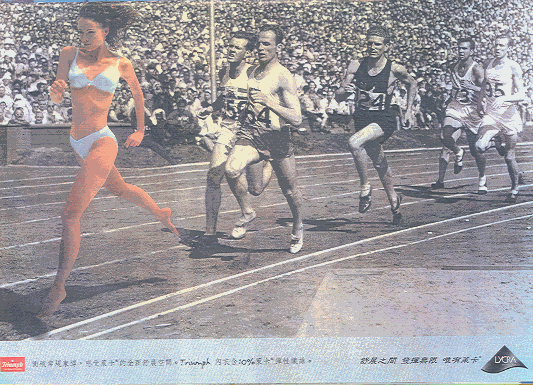
Figure 1A
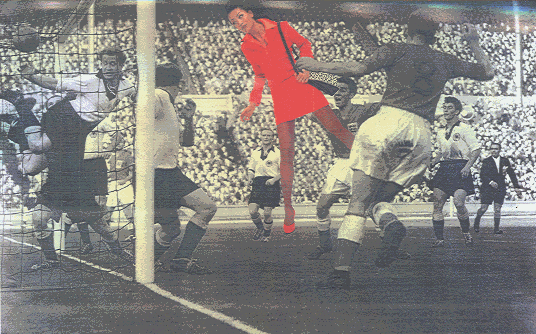
Figure 1B
In most people’s
opinion, women’s clothing, which has become the synonym of fashion, are nothing but to dress women up and to make them more
beautiful. However, this traditional conception is subverted by a series of
advertisements for “LYCRA” (the trademark of E.I. du
Pont de Nemours and Company in
There is no more obstacle for women to choose jobs as long as they want. In figure
1A, the woman wears a “Triumph” underwear; in figure 2B, the model
is dressed in is dressed in a “Jessica Suit.” Both “Triumph” underwear and
“Jessica Suit” are made of “LYCRA” textile. The “Triumph” wearer dashes in a
running race, while the “Jessica Suit” wearer engages in a football game. The
ad agent is telling the potential customers that women can do their jobs as
well as men do, even in those jobs which traditionally belong to the male only.
Moreover, the ad agent gives women a hint that they can do better after they
dress themselves in “LYCRA” Now, if we compare figure 1 with the other “LYCRA”
ads, we can find some interesting differences and similarities.

Figure 2A
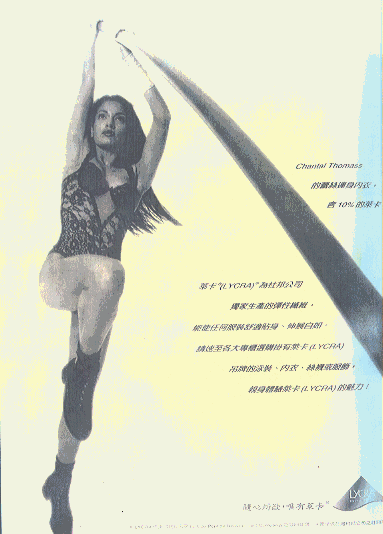
Figure 2B
Women are more and
more independent and powerful in our society. In figure 2A, an earlier
issue of “LYCRA” ad, there is a women in the photo who seems to take a pole
vault, but the photo doesn’t show us where and what is the obstacle of her
vault. If we search for an inner meaning in the photo, the obstacle symbolizes
every kind if problems to women in every parts of life, including sexual discrimination
and male chauvinism. This is an indirect way to show the feminist concern for
social identify. In figures 1A and !B, the woman in
the running race and the one in the football game are struggling with men and
surpasses them ; in a latter ad example, a women in the water-skiing (figure
3A) and a woman in the boxing match (figure 3B) have defeated men
easily and get higher positions than men . This shows a feminist consciousness
to overpass the male way. It also tells female audience that women can defeat
men easily, instead of following and obeying them in every domains of life .
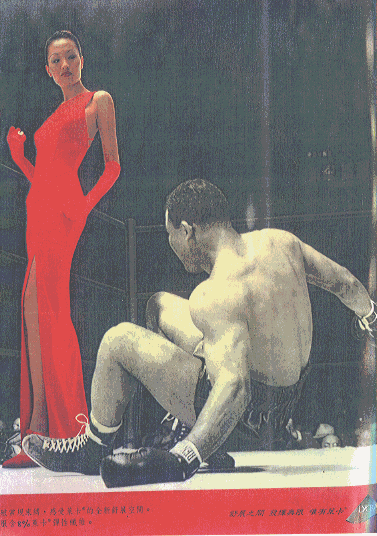
Figure 3A
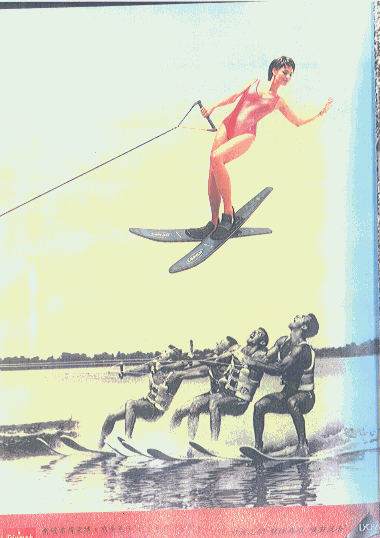
Figure 3B
Nowadays, for women,
there is no more restriction about how and when to dress themselves. There is a
similarity in these series of ads: these five female models in these three ads
dress themselves improperly and informally. Anyhow, the women easily defeat
those men who dress themselves correctly. This contrast seems to be a sneer to
the decorum of women’s clothing and an irony to men’s chauvinism--that women
can defeat men even though they are not well-prepared in physiques or get less
material and spiritual supports from the social system. The ad agent tries to
tell women that they should choose the clothes that make them comfortable and
confident, such as the LYCRA clothing .
In addition to the
sense of “triumph,” the ad agent also emphasizes the grace and leisuredness of in their career whenever they wear the
LYCRA clothing. In these three ads , all those five
women take their time on their works ; in contrast , those men are so tired and
exhausted. It has molded an illusion that women who dressed in LYCRA clothing
become the Superwomen. The blue underwear and red tight suits are like the red
cap and blue underwear for the “Superman.
Everyone needs love,
and love always takes an important part in human’s life. None, even those most
radical feminists, can resist the power and the lure of love. For this reason,
we can analyze these “LYCRA” ads from a common woman’s views instead of from
the feminist’s. In these issues of “ LYCRA ” ads, we
can explain that those women in photos are adored by men and has captured men’s
hearts because they dress in the LYCRA clothing. In this part, the ad agent
also tries to tell the female customers that as long as they dress in LYCRA, they
can be attractive and charming as those women in the ads.
These series issues
of “ LYCRA ” ads appeared in the Global Views Monthly (遠見雜誌), and that means the ad agent always
knows clearly to whom they are addressed to--those career women who are
successful in their career, no matter they are feminists or not. Honestly
speaking, these “LYCRA” ads succeed in deliver the career women to the manufacture.